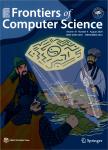Dynamic traveling time forecasting based on spatial-temporal graph convolutional networks
作者机构:School of Computer and Information EngineeringShanghai Polytechnic UniversityShanghai 201209China College of Computer ScienceZhejiang UniversityHangzhou 310027China
出 版 物:《Frontiers of Computer Science》 (中国计算机科学前沿(英文版))
年 卷 期:2023年第17卷第6期
页 面:179-181页
核心收录:
学科分类:08[工学] 081104[工学-模式识别与智能系统] 0835[工学-软件工程] 0811[工学-控制科学与工程] 0812[工学-计算机科学与技术(可授工学、理学学位)]
基 金:supported by the National Natural Science Foundation of China(NSFC)(Grant No.62002216) the Shanghai Sailing Program(No.20YF1414400) the Collaborative Innovation Platform of Electronic Information Master of Shanghai Polytechnic University(SSPU)(No.A10GY21F015) the Research Projects of Shanghai Polytechnic University(Nos.EGD22QD03,EGD23DS05) the Key Disciplines of Computer Science and Technology of SSPU and the Construction of Electronic Information Master Degree of SSPU.
主 题:forecasting traveling convolution
摘 要:1 Introduction Traveling time forecasting,the core component in GPS navigation systems and taxi-hailing apps,has attracted widespread attention.Existing research mostly focuses on independent points like traffic flow prediction[1,2]or route planning[3,4],which ignore globality and lack satisfactory dynamic progress to adopt sophisticated traffic conditions.To facilitate this line of research,we propose a novel Dynamic Traveling Time forecasting framework based on the Spatial and Temporal Graph convolution(DTT-STG)integrated with map-matching,road speed forecasting,and route planning with full consideration of the dynamic spatial and temporal dependency.DTT-STG designs an angle-based map-matching algorithm to describe the direction of vehicles and explores a self-adaptive adjacency matrix combined with diffusion convolution and attention mechanisms to capture the dynamically changing spatial-temporal dependencies.Afterward,the progressive method is exploited to calculate the traveling time and plan the shortest route dynamically in continuously changing traffic states.



